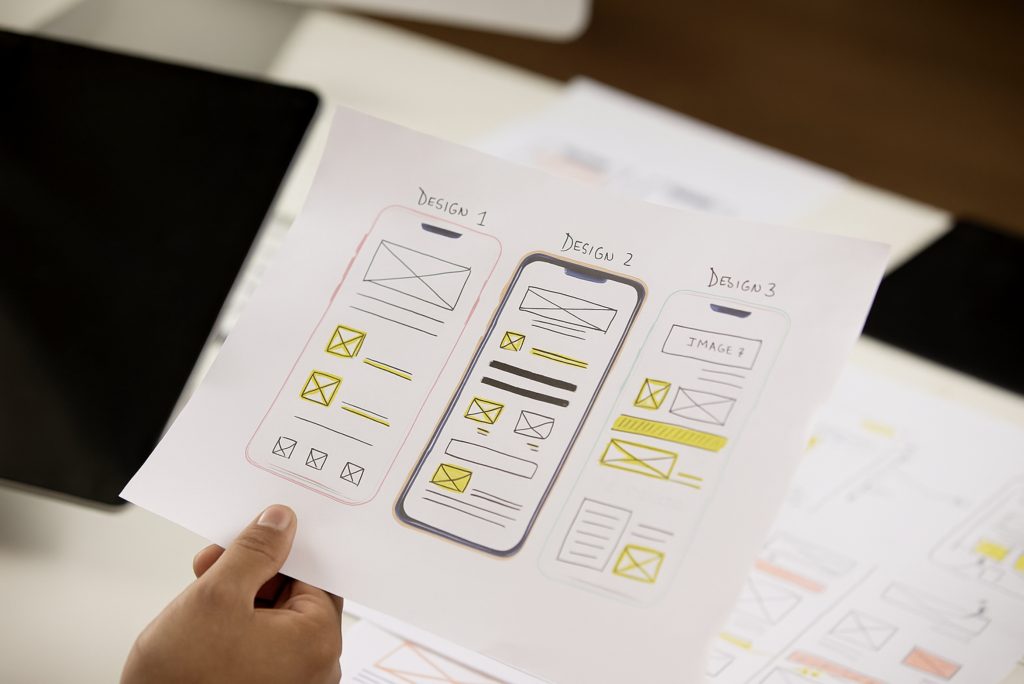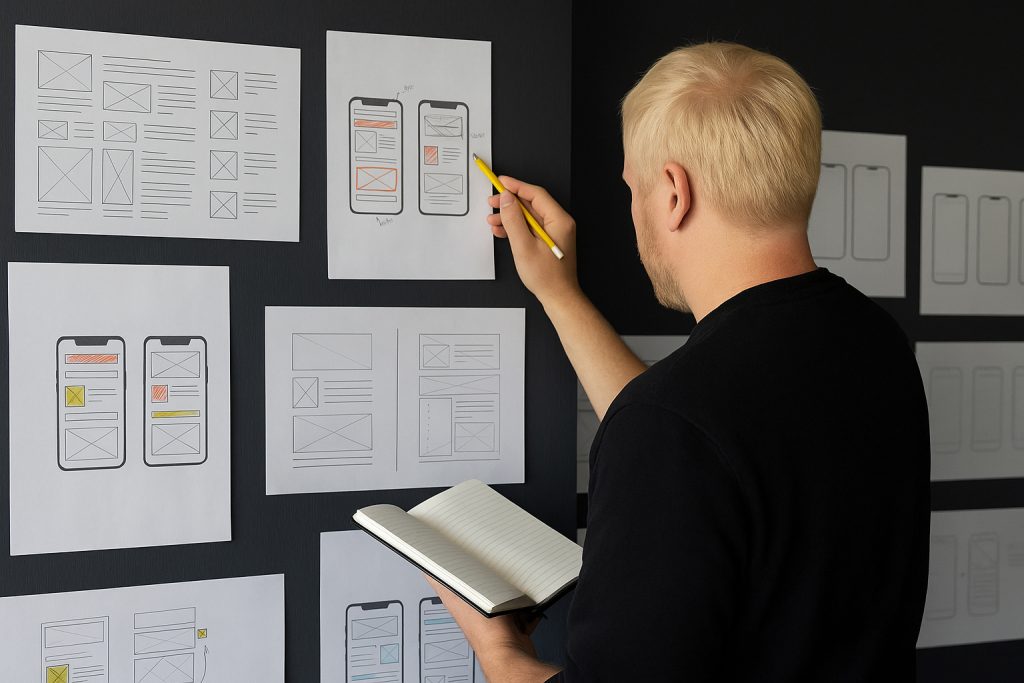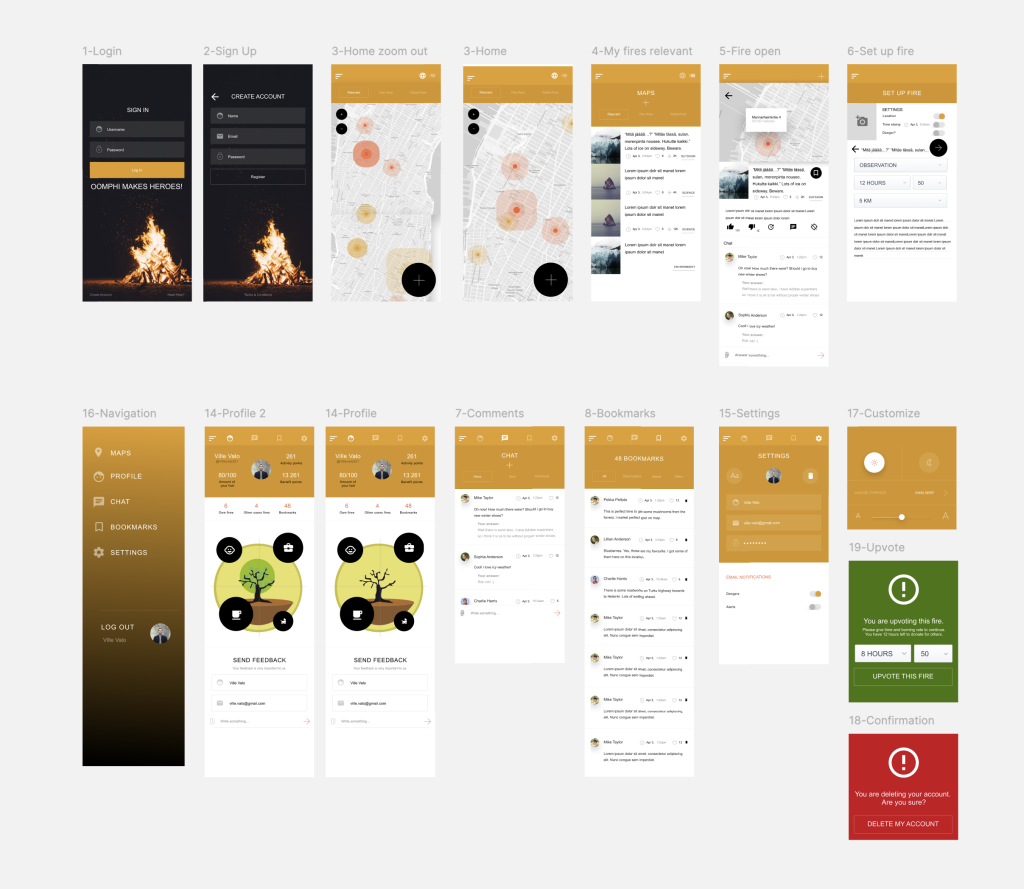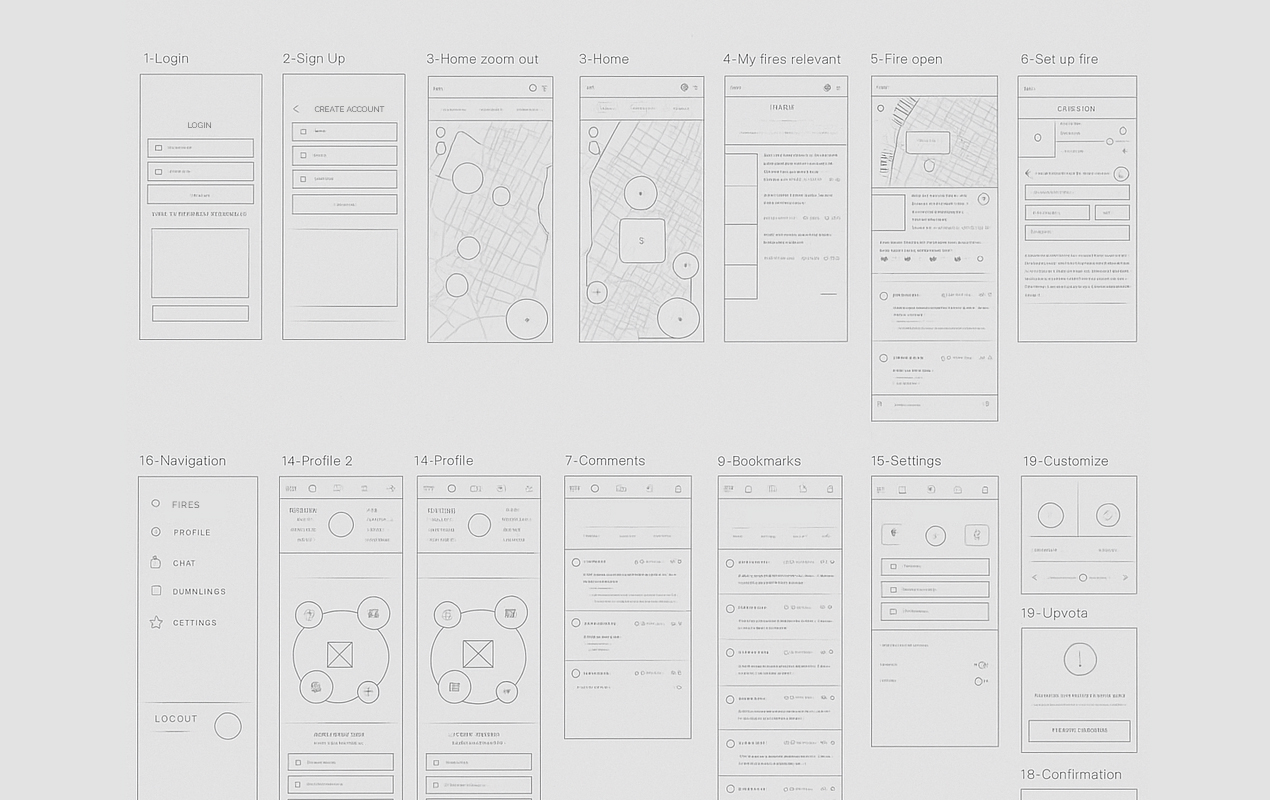Summary
Client: Oomphi Oy
Year: 2017
My Services and Contributions
User Experience Design
User Interface Design
User Research & User Flows
Wireframing
A/B Testing
Background
Oomphi Oy was a startup company, who had this great idea of an mobile app, where people could make obsrvations on events around them, or just offer any kind of help, by setting up “fires”. More interested people were about the issue, more bigger fire would grow.
Objective
The goal was to develop a mobile application concept in close collaboration with the company and its end users. The concept was intended to serve as a foundation for a future full-scale application—one that effectively meets user needs while supporting the company’s long-term strategic objectives.
Project phases
1. Kick-off Workshop
The project began with a collaborative workshop alongside the client to define the value proposition, key user needs, and strategic objectives for the upcoming solution.
2. Customer Needs Validation, Interviews, and Analysis
A second validation workshop was held to confirm the key customer needs and to align on the interview strategy and focus areas. Following this, seven in-depth customer interviews were conducted to gather insights, which formed the basis for further analysis and refinement of the solution approach.
3. Ideation, Design, and Prototyping
Building on validated hypotheses, an initial prototype was designed to explore and test selected features with end users, laying the foundation for user-centered refinement and further development.
4. Prototype Testing and Analysis with End Users
A second iteration of testing was conducted through interviews with six end users to validate the prototype and gather actionable feedback for further refinement.
5. Finalization of the Product
The concept design phase concluded with a finalized set of UI screens and a clickable prototype that incorporated the features validated during user testing. This deliverable served as a clear foundation for the upcoming development phase.

Prototype Testing with End Users
To ensure the concept resonated with real users, I conducted in-person testing sessions with carefully selected participants from the target audience. These sessions offered valuable, first-hand insight into how users interacted with the prototype—what worked well, where they hesitated, and what needed improvement.
By encouraging users to verbalize their thoughts while navigating the prototype, I was able to capture both their reactions and reasoning. This helped surface key usability challenges, uncover unmet needs, and validate assumptions early in the process.
The insights gathered were analyzed and translated into actionable design improvements. I iteratively refined the concept and prototype, improving user flows, adjusting features, and polishing interface elements. Each iteration brought the solution closer to a seamless and intuitive experience.
Multiple rounds of testing supported a continuous feedback loop, allowing me to evaluate the impact of each change and ensure that the design remained aligned with user expectations. Only the most successful designs—those that met predefined usability goals—were advanced to the next phase of development.
This process not only strengthened the product but also reinforced my belief in the value of human-centered design as a driver for meaningful and effective solutions.

Finalization of the Product
In the final stage of the concept development project, I brought together all previously analyzed research findings, user insights, and feedback from testing rounds to shape the final version of the prototype for the new mobile service concept. This stage marked the transition from exploration and iteration to definition and delivery, where strategic clarity and design maturity came into focus.
The prototype was refined to a high level of fidelity, with finalized UI screens that reflected not only the validated features but also an improved overall user experience—streamlined navigation, visual consistency, and optimized interaction flows. Careful attention was paid to aligning design decisions with both user expectations and business goals, ensuring the solution would be intuitive, scalable, and ready for development.
In parallel, I developed a high-level product roadmap to support the implementation process. This roadmap mapped out the validated core features to be built in the initial release, providing the team with a clear direction for development. It also captured additional user needs and feature requests identified during interviews and testing, which, while not prioritized for the MVP, were categorized and scheduled for future consideration in upcoming phases.
Prioritization was driven by a human-centered approach—placing the user at the core of every decision. I leveraged direct feedback from test users to determine which functionalities were truly essential to solving their problems or enhancing their experience. Less critical features, edge-case needs, and “nice-to-have” requests were not discarded, but thoughtfully documented and included in the roadmap for phased development.
This final phase provided a comprehensive and actionable foundation for product development, ensuring that the project could move forward with confidence—backed by real user data, clear priorities, and a well-structured vision for growth.

